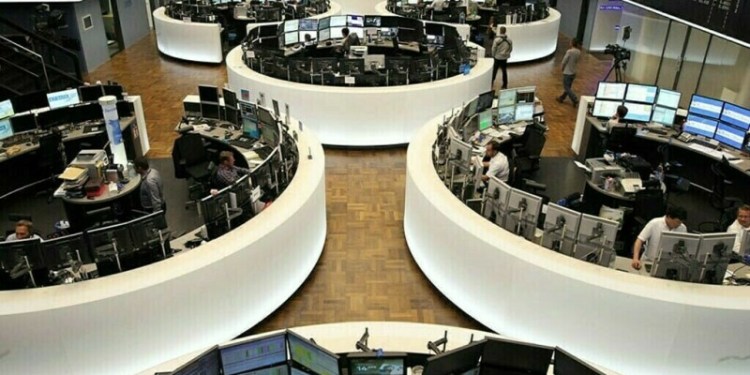 © Bloomberg. A conveyor stands at the Hi-Crush Partners LP sand mining facility in Kermit, Texas, U.S., on Wednesday, June 20, 2018. In the West Texas plains, frack-sand mines suddenly seem to be popping up everywhere. Twelve months ago, none of them existed – together, these mines will ship some 22 million tons of sand this year to shale drillers in the Permian Basin, the hottest oil patch on Earth. Photographer: Callaghan O’Hare/Bloomberg
© Bloomberg. A conveyor stands at the Hi-Crush Partners LP sand mining facility in Kermit, Texas, U.S., on Wednesday, June 20, 2018. In the West Texas plains, frack-sand mines suddenly seem to be popping up everywhere. Twelve months ago, none of them existed – together, these mines will ship some 22 million tons of sand this year to shale drillers in the Permian Basin, the hottest oil patch on Earth. Photographer: Callaghan O’Hare/Bloomberg(Bloomberg) — Goldman Sachs Group Inc (NYSE:). is turning cautious on commodities after months of recommending them to investors.
Raw materials are no longer significantly undervalued and further price increases will require data showing better demand and tighter supply, analysts including Jeffrey Currie wrote in a March 4 report. However, a stronger-than-expected recovery in global economic growth could boost commodity indices, and there are still some industrial metals that offer relatively good value, according to the bank.
“From this point, positive returns will need to be justified by further evidence of improving fundamentals,” the analysts wrote. “The risk-reward of being outright long commodities is therefore less compelling now compared to a few months ago, and we recommend a neutral portfolio position in commodities.”
That represents a shift in stance by the long-time bull, which had stood firm on its recommendation even when raw materials were roiled over the past year. Just in January, Goldman stuck with its bet after saying it was “hoodwinked” by a shift in investor sentiment that pummeled prices in late 2018 and admitting its justification for owning commodities “failed spectacularly” in the fourth quarter.
There’s been a strong ‘Goldilocks’ rally that’s helped raw materials recover from the late-2018 sell-off, the bank said, referring to a scenario that signals ideal market conditions. Its economists predict that global macroeconomic data will probably turn stronger as some hurdles to growth, such as a U.S. government shutdown, are removed and some nations including China ease monetary policy to spur activity.
“While this looks like it would point to even more upside for commodities, we believe that commodities have now reached a level where they are no longer significantly undervalued relative to their current fundamentals,” the Goldman analysts wrote in the report.
Some data in energy markets is encouraging, according to Goldman. The bank said late last month that oil prices could rally further as top OPEC member Saudi Arabia cuts output faster than U.S. shale drillers can fill, and supply disruptions in Venezuela are likely to accelerate in coming months. Still, it warned that such an advance could prove fleeting.
Elsewhere, “better data is not yet apparent,” the analysts said. In China — the world’s biggest consumer of metals, energy and grains — February manufacturing data was disappointing, as are property sales, which signal weaker demand for metals. That may improve in coming months as credit data suggests that the Asian nation is willing to ease policy in response to economic growth rates that are running significantly below targets, Goldman said.
The bank’s near-term commodity forecasts remain bullish, with the Enhanced S&P GSCI gauge predicted to rise another 5 percent over three months. However, Goldman has more confidence in energy returns of 6.2 percent in the same period, and sees limited scope for further increases in the industrial metals sub-index, which may slip 2.4 percent.
Fusion Media or anyone involved with Fusion Media will not accept any liability for loss or damage as a result of reliance on the information including data, quotes, charts and buy/sell signals contained within this website. Please be fully informed regarding the risks and costs associated with trading the financial markets, it is one of the riskiest investment forms possible.
Source: Investing.com




























